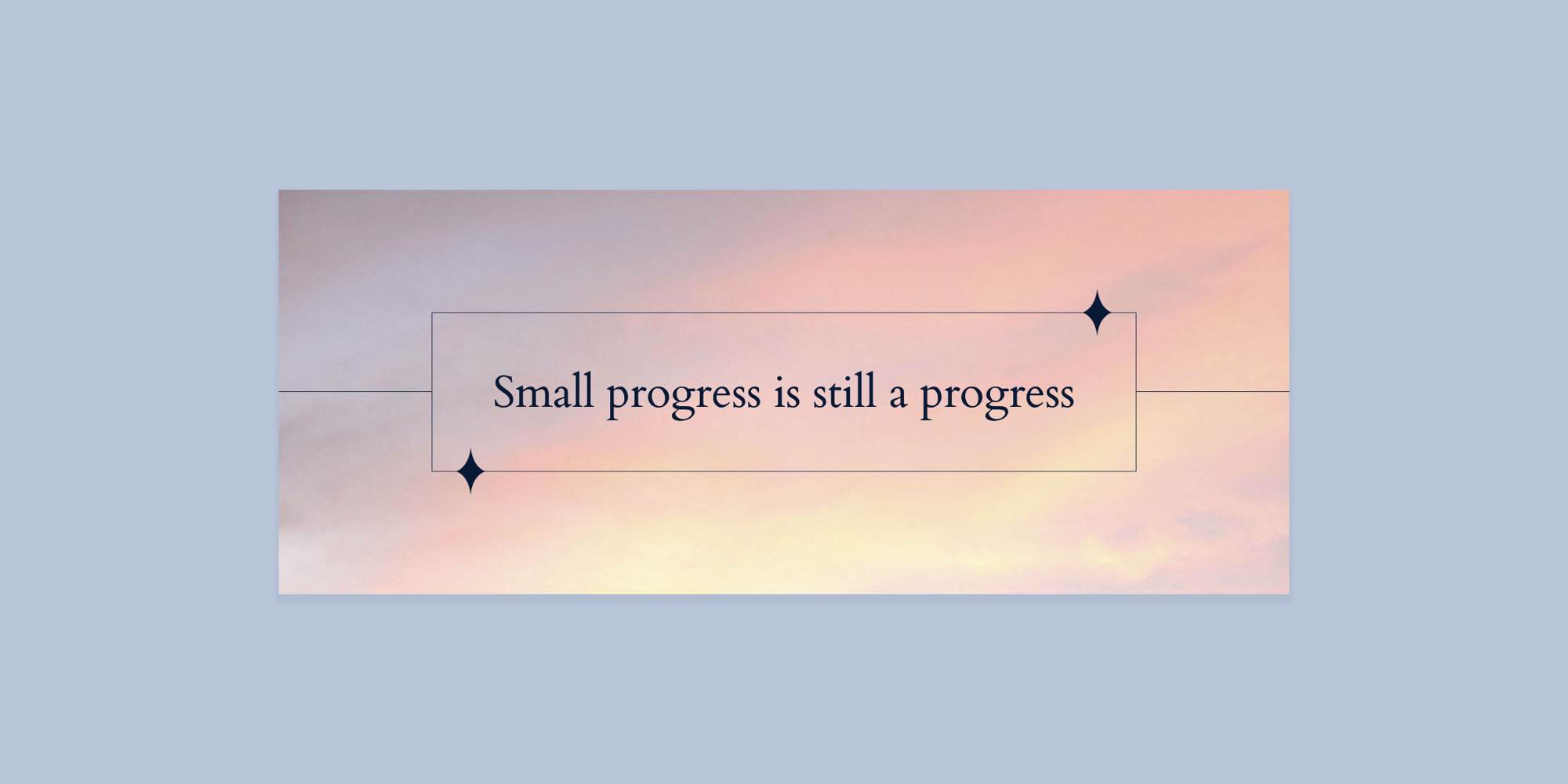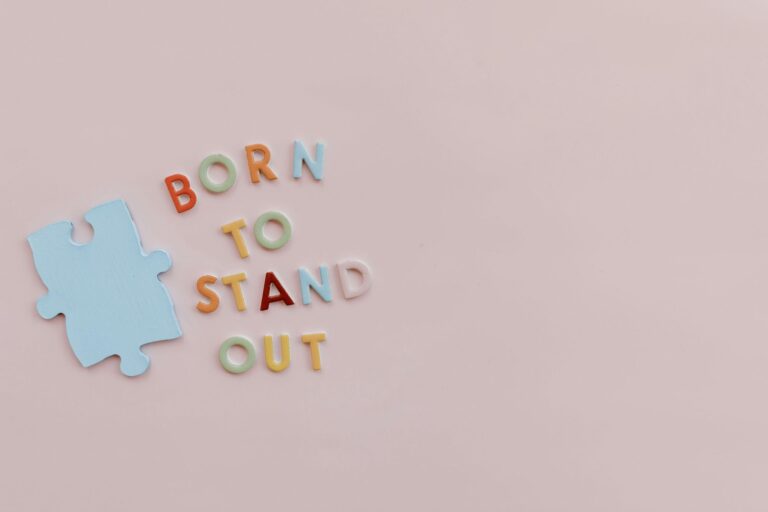How to use journaling for personal growth
You bought the journal. Maybe even the nice pen. You told yourself this time would be different. And now it’s been three weeks and you’ve written in it twice – both times just “I should journal more.”
Or maybe you do sit down to journal, but either nothing comes out, or everything comes out in the same anxious spiral you’ve been living in all day. You close the notebook thinking “well, that didn’t help.”
I see you.
You’re not bad at journaling. You just don’t know which tool to grab. The thing that helps when you’re overwhelmed is completely useless when you’re trying to make a decision. The technique that works when you’re spiraling does nothing when you need clarity.
Journaling isn’t one thing. It’s a toolkit. And different tools do different jobs.
Before we dive into the toolkit, here are some complementary journaling resources:
- The morning journal prompts that meet you where you actually are
- Self reflection journal prompts: The questions that change everything
- Journal prompts for self discovery: The questions that reveal who you really are
- Self worth journal prompts: Rewriting the story you tell yourself about you
Now let’s find the right tool for what you’re dealing with. Let’s break down exactly which tool to reach for, when to use it, and how to actually do it in a way that helps.
Journaling for overwhelm: When you’re lying awake at 2 am with 47 tabs open in your brain
The tool: Brain dump
This is for when you can’t focus because everything feels urgent at once. When your brain is jumping from the work deadline to the text you need to send to what you’re making for dinner to that thing you said three years ago that still makes you cringe.
The goal here isn’t insight. It’s not clarity. It’s getting the noise OUT of your head so you can think again.
How to actually do it:
Set a timer for 10-15 minutes. Longer if you need it, but start with 10.
Write without stopping. Your hand keeps moving the entire time. Don’t punctuate if you don’t want to. Don’t make sense. Don’t censor. Don’t reread as you go.
Just let your hand move and dump every single thought that’s taking up space. The work email. The thing you forgot to do. The random song lyric stuck in your head. The worry about money. The grocery list. The existential dread. All of it.
It’s going to look like a mess. It’s supposed to.
What this actually looks like:
“I need to respond to Sarah’s email why didn’t I do that yesterday she probably thinks I’m ignoring her I’m not ignoring her I just keep forgetting also need to pay that bill when is it due is it already late probably late should check that tonight also what am I making for dinner we have nothing I should have gone to the store yesterday why do I keep putting everything off I’m so behind on everything always behind…”
See? Not poetry. Not profound. Just the contents of your brain on the page.
The mistake people make:
They try to make it coherent. They pause to think about what to write next. They reread and judge what they just wrote.
Don’t. The power is in the continuous flow. When you stop to think, you’re back in your head. The point is to get OUT of your head.
What happens after:
Sometimes you’ll look at what you wrote and realize half of it is the same three worries on repeat. That’s useful information. Sometimes you won’t look at it at all – you’ll just feel lighter because it’s not all bouncing around your skull anymore.
Either way, you’ve cleared the cache. That’s the win.
When to use this:
- Before bed when your brain won’t shut off
- When you sit down to work and can’t focus
- After a overwhelming day when you feel like you’re drowning
- When anxiety is making everything feel equally urgent

Journaling for self-reflection: When something feels wrong but you can’t name it
The tool: Prompted reflection
This is for that feeling of “I don’t know, everything?” when someone asks what’s wrong. You know something’s off. You just can’t locate it.
Your brain is too overwhelmed to sort through the pile on its own. The prompt gives you a starting point – one specific thread to pull instead of trying to untangle everything at once.
How to actually do it:
Pick ONE prompt. Write it at the top of your page. Then write for 5-10 minutes. If you run out of things to say, keep your hand moving anyway. Write “I don’t know what else to write” until something else comes.
Prompts that actually work:
For when everything feels heavy:
- What’s taking up the most space in my head right now?
- What am I carrying that isn’t mine to carry?
- If I could only worry about one thing today, what would it be?
For when you’re avoiding something:
- If I’m being really honest, what am I avoiding?
- What conversation do I need to have that I keep putting off?
- What would I do if I wasn’t scared?
For when you need perspective:
- What would I tell my best friend if they were in this situation?
- What do I know for sure right now?
- What’s the story I’m telling myself about this? Is it true?
For when you’re stuck:
- What am I pretending not to know?
- What would change if I let this go?
- What do I need that I’m not asking for?
The mistake people make:
They answer in one sentence and stop. “What’s taking up space? Work.” Done.
No. Keep going. “Work is taking up space. Specifically the project that’s due next week. Actually not even the project itself – the fact that I said yes to it when I knew I didn’t have time. Why did I do that. I always do that. Say yes when I mean no. And then I’m resentful and overwhelmed and it’s my own fault.”
See how we got somewhere? The first answer is rarely the real answer.
What this looks like in practice:
Let’s say you pick: “What am I avoiding?”
“I’m avoiding talking to my partner about money. We need to have that conversation and I keep finding reasons not to. I tell myself it’s because I’m tired or we’re both stressed but really I’m scared. Scared they’ll be mad at how much I spent. Scared we’ll fight. Scared I’ll cry and feel stupid. But avoiding it is making me anxious every single day and that’s worse than just having the conversation.”
That’s the thing you couldn’t name before you started writing.
When to use this:
- When you feel off but can’t explain why
- When you’re irritable or withdrawn and don’t know what triggered it
- When the same feeling keeps showing up but you can’t pin it down
- When you need to process something but don’t know where to start
Journaling for perspective: When you’re stuck replaying what you should’ve said or paralyzed by right now
The tool: Future self writing
This pulls you out of the moment you’re stuck in and lets you borrow perspective from a version of you that’s already on the other side.
When you’re in it – when you’re replaying the conversation, obsessing over the decision, drowning in the current situation – you can’t see anything else. Future self writing creates distance without dismissing what you’re feeling.
How to actually do it:
Decide how far in the future you’re writing from. Six months usually works. A year if it’s a big thing. Five years if you need serious distance.
Write a letter from that future version of you to current you. Let them talk to you the way someone who loves you would – honest, but kind.
What to include:
Start with acknowledgment. Future you sees what current you is going through. They’re not dismissing it.
Then perspective. What does future you know now that current you can’t see yet? How did this turn out? What mattered and what didn’t?
Then guidance. What does future you wish current you would focus on, let go of, or do differently?
What this actually looks like:
“Hey. I know you’re replaying that conversation from yesterday on a loop. I know you’re convinced you said the wrong thing and now everything’s ruined.
Here’s what I know from six months out: it wasn’t as big as it feels right now. You actually talked to them two days later and cleared it up. They weren’t nearly as upset as you thought. And even the part that was awkward – you both moved past it.
What I wish you could see is that you’re spending so much energy trying to control how they perceive you, and it’s not working anyway. People think what they think. The only thing you control is whether you’re being honest or performing.
Stop performing. Say the thing you actually mean. It’ll be uncomfortable for five minutes and then it’ll be done. That’s so much better than this – watching every word, second-guessing everything, feeling like you’re walking on eggshells.
Also – three months from now, you won’t even remember this conversation that’s taking up your entire brain right now. I promise.”
The mistake people make:
They make future self some guru on a mountain who has it all figured out and speaks in inspirational quotes.
No. Future you is still you. They’re just further along. They can see what you can’t see from where you’re standing, but they remember what it felt like to be there.
Write like a person, not a motivational poster.
Variations that work:
- Write from future you back to past you (the version from a year ago who was going through something you’ve since moved past).
- Write from current you to younger you who needed to hear something you now know.
- Write from the version of you that made the decision you’re scared to make – what’s life like on the other side of it?
When to use this:
- When you’re stuck in rumination and can’t get out
- When a current problem feels like it’s going to last forever
- When you need permission you can’t give yourself right now
- When you’re catastrophizing and need a reality check

Journaling for decision-making: When there’s a voice in your head arguing with another voice
The tool: Dialogue journaling
This is for when you’re ping-ponging between two choices, or two parts of yourself are having a full-on argument in your head.
Should I stay or go. Should I say something or let it go. I want this but I also want that. One part of you is screaming one thing, another part is screaming something else, and you’re stuck in the middle going nowhere.
Dialogue journaling lets both sides actually talk instead of just shouting over each other.
How to actually do it:
Set it up like a script. Give each side a voice. They take turns. One speaks, then the other responds. Keep going back and forth until something shifts.
You can label them if it helps – Voice 1 and Voice 2, or The Part That Wants to Quit and The Part That’s Scared to Quit, or however makes sense to you.
What this actually looks like:
Let’s say you’re trying to decide whether to leave your job.
“I should just quit.”
“But what if you regret it?”
“I’m miserable every single day.”
“You’ve been miserable before and it passed.”
“This feels different.”
“Different how?”
“I used to come home tired. Now I come home empty. Like there’s nothing left.”
“Okay, but you don’t have another job lined up.”
“So I’ll figure it out.”
“With what money?”
“I have savings.”
“For how long?”
“Three months. Maybe four if I’m careful.”
“And if you don’t find something in four months?”
“Then I’ll figure that out too. But staying here is killing something in me and I don’t think I get that back.”
See what happened? We started with “should I quit” and ended somewhere much more real – with what’s actually at stake.
The mistake people make:
They let one voice dominate. Or they cut it off too soon because they’re uncomfortable with the conflict.
Let them fight. Let it get messy. The truth usually shows up when both sides have said everything they need to say and one of them finally runs out of ammunition.
What you’re looking for:
- The moment when one voice doesn’t have a comeback
- When something new emerges that neither side was saying at the start
- When you realize one voice is actually scared, not logical
- When the real fear reveals itself under all the surface arguments
Different types of dialogues that work:
- The decision dialogue: Two sides of a choice arguing it out
- The inner critic dialogue: The harsh voice vs. the compassionate voice
- The fear vs. desire dialogue: What you want vs. what scares you about wanting it
- The past vs. present dialogue: Old you talking to current you about what’s changed
When to use this:
- When you’re genuinely torn between two options
- When you keep flip-flopping and can’t land anywhere
- When one part of you wants something and another part is blocking it
- When your inner critic is loud and you need to talk back
Journaling for truth-checking: When your brain is presenting fiction as fact
The tool: Evidence gathering
This is for when you’re convinced nobody likes you, you always fail, nothing ever works out – and your brain is selling it as absolute truth.
Your brain is really good at finding evidence for what it already believes. It’s confirmation bias on steroids. You think people don’t like you, so you notice every time someone doesn’t text back and ignore every time someone does.
Evidence gathering forces you to look at the whole picture, not just the parts your brain wants you to see.
How to actually do it:
Pick the thought your brain is selling as fact. Write it at the top of the page. Draw a line down the middle.
Left side: “Evidence for this.” Right side: “Evidence against this.”
Now fill in both columns. And here’s the key – you have to actually try on the right side. Your brain will fight you. It’ll say “there isn’t any evidence against this because it’s TRUE.”
Write it anyway.
What this actually looks like:
Let’s say the thought is: “I’m a terrible friend and nobody actually wants me around.”
Evidence for:
- I forgot Sarah’s birthday last month.
- The group chat went silent after I sent that message.
- I got left out of plans last weekend.
- When I talk, people seem distracted.
- Nobody’s reached out to me first in weeks.
Evidence against:
- Emma texted me a meme yesterday just because she thought I’d laugh.
- My friend called me last week just to vent about her day – she chose me.
- I was invited to three things this month (even if I couldn’t go to all of them).
- My best friend literally said “I’m so glad you’re in my life” two weeks ago.
- Someone asked my advice about their relationship situation.
- I made that one friend laugh so hard she cried at dinner.
See what’s happening? The left side feels true because that’s what your brain has been showing you on repeat. But the right side is also true. You just haven’t been looking at it.
The mistake people make:
They fill in the left side with feelings (“I feel incompetent”) instead of actual evidence. Or they fill in the right side with what they think they’re supposed to say instead of real examples.
Stick to things that actually happened. Things someone could observe. Things you could point to.
Going deeper:
After you’ve filled in both sides, look at them. Really look.
Ask yourself:
- Is the evidence on the left actually evidence of what I think it means, or could it mean something else?
- Am I holding myself to a standard I don’t hold anyone else to?
- If my best friend showed me this list, what would I tell them?
Variations that work:
- The pattern check: “This always happens” – Does it actually? List every time it happened and every time it didn’t.
- The people check: “Nobody likes me” – List every interaction from the last week. Include the neutral ones. They count.
- The fortune telling check: “It’s going to go badly” – List every time you predicted this before and what actually happened.
When to use this:
- When you’re in a shame spiral
- When your brain is catastrophizing
- When you’re convinced something is universally true about you
- When you need reality back on the table

Journaling for deeper insight: When you have a surface answer but know there’s something deeper
The tool: Question spiraling
This is for when “I’m stressed about work” is true, but it’s not the whole truth. When you answer “I’m fine” but you know you’re not fine. When you can name the feeling but not the source.
Most of us stop at the first layer. We accept the surface answer and move on. Question spiraling says no – keep going. Follow the thread down until you hit the real thing.
How to actually do it:
Start with the surface answer. Write it down.
Then ask: “Why?” or “What about that?” or “What does that mean?”
Write the next answer.
Ask again. Keep following the thread down.
What this actually looks like:
“I’m stressed about work.”
What about work?
“I have too much to do and not enough time.”
What about that?
“I feel like I’m constantly behind and never catching up.”
What about feeling behind?
“I feel like I’m failing.”
What does failing mean to you?
“Like I’m not good enough. Like I said I could handle this and I can’t.”
What happens if you’re not good enough?
“People will see. They’ll realize they made a mistake with me.”
And then what?
“Then I lose everything I’ve worked for. Then I’m back to being the person who couldn’t make it.”
There it is. That’s the real thing. It’s not actually about the to-do list. It’s about the story you’re telling yourself about what it means if you can’t do it all perfectly.
The questions that work:
- Why? (Classic, but don’t overuse it or you’ll sound like a toddler to yourself)
- What about that?
- What does that mean?
- What does that mean about me?
- What am I afraid will happen?
- And then what?
- Why does that matter?
- What’s underneath that?
The mistake people make:
They stop too soon. They hit the second or third layer and think “okay, that’s it.”
Keep going. You’ll know you’ve hit the real thing because it’ll feel different. Your body will react. You’ll want to stop writing. That’s when you keep going.
How to know you’re going deep enough:
You’ve hit the real thing when:
- Your first instinct is “I don’t want to write that”
- You feel it in your chest or stomach
- The answer surprises you
- You suddenly feel emotional
- You think “oh shit, that’s actually what this is about”
Variations:
- Start with a feeling: “I’m angry” → Why? → What about that? → Keep going.
- Start with a behavior: “I keep procrastinating” → What am I avoiding? → What about that? → Keep going.
- Start with a pattern: “I always do this” → Do what? → Why? → What does that protect me from? → Keep going.
When to use this:
- When you know your first answer isn’t the real answer.
- When the same issue keeps showing up in different forms.
- When you’re stuck in a pattern you don’t understand.
- When you feel something but can’t name what it is.
Putting it all together
You don’t need to use all of these. You don’t need to journal every day. You don’t get a gold star for doing it “right.”
What you need is to know which tool fits the job in front of you right now.
Some days you’ll use one. Some days you’ll use three. Some days you won’t need any of them.
The journal isn’t the point. The tool that helps you think clearer, feel less stuck, or finally name the thing – that’s the point.
So grab the tool that fits what you’re dealing with. Not the one you think you’re supposed to use. Not the one that looks pretty. The one that does the job.
Your journal doesn’t need to be profound. It needs to be useful.
Right now, in this moment, which one of these is your life?
- Brain won’t shut up? Brain dump.
- Something’s off but you can’t name it? Prompted reflection.
- Stuck replaying something or spiraling? Future self.
- Two voices arguing in your head? Dialogue.
- Brain selling you lies as facts? Evidence gathering.
- You have a surface answer but know there’s more? Question spiraling.
Pick that one. Open a notes app, grab a piece of paper, pull out that abandoned journal from three weeks ago.
You don’t need to do all of them. You don’t need to start from the beginning. You just need the one that fits what you’re dealing with right now.
Start there. See what happens.
Keep exploring:
Now that you know which journaling tool to use, here’s what to dig into next:
- Need more structure for your mornings? The power of tiny moments: How 5 minute rituals can transform your life
- Struggling with what’s holding you back? What’s blocking me? The 5 hidden barriers that keep you stuck
- Want guided self-discovery? The ultimate self-discovery quiz: Find out what’s really holding you back
- Building better habits around reflection? How to build a healthy relationship with yourself







